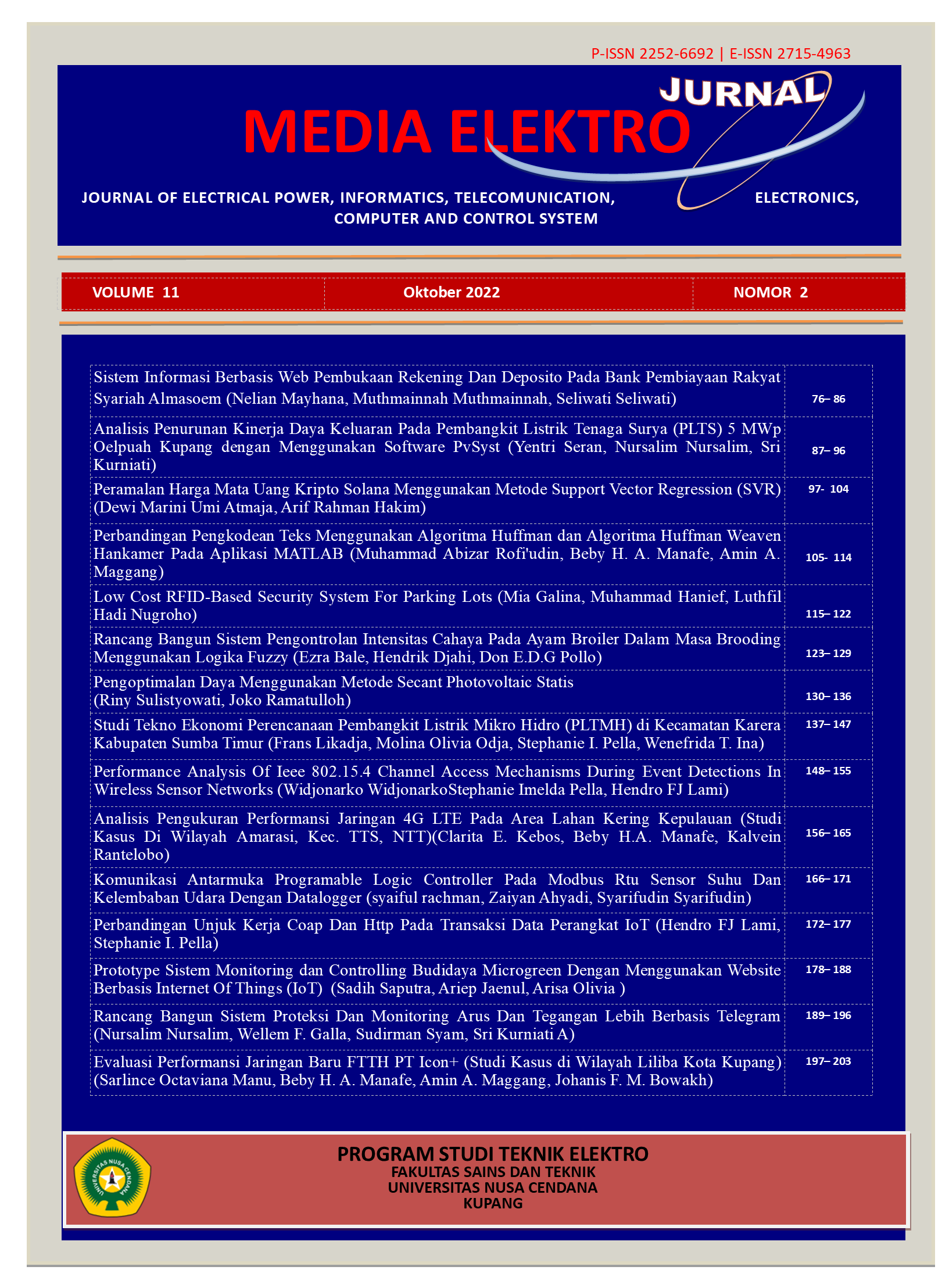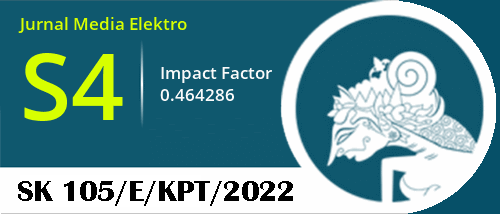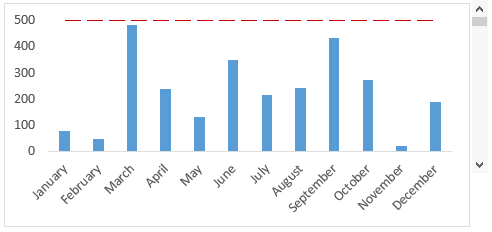STUDI TEKNO EKONOMI PERENCANAAN PEMBANGKIT LISTRIK MIKRO HIDRO (PLTMH) DI KECAMATAN KARERA KABUPATEN SUMBA TIMUR
Abstract
This study aims to measure the water potential of the Pahambur Wai River, in Nggongi Village, Karera District, East Sumba Regency to be used as a driving source for Micro Hydro Power Plants.This study aims to measure the water potential of the Pahambur Wai River, in Nggongi Village, Karera District, East Sumba Regency to be used as a driving source for Micro Hydro Power Plants. The research methods used are observation, area mapping, measurement of water flow and elevation, calculation of potential for electric power generated, Detail Engineering Design, cost calculation and economic feasibility.From the analysis and calculation, the maximum water flow of the Pahambur Wai River is 1,687 m3/s, minimum water flow is 0.054 m3/s. Probability availability is 70%, or 0.240 m3/s, with an effective elevation of 15 meters. The actual electric power generated is 20.44 kW. Type of turbine of MHPP is the Crossflow T14, D300 turbine, and coupled using a V belt, to a 3 phase synchronous generator, with a capacity of 25 kW.The plan for the construction and operation of the MHPP is economically feasible, as can be seen from the indicators of investment feasibility NPV, IRR, and Profitability Index.
Downloads
References
Agustina, Karen, "Indonesia dan Ketahanan Energi". Pidato di Center for Strategic and International Studies (CSIS), Washington, D.C. http://www.pertamina.com/news-room/pidato-an-artikel/indonesia dan ketahanan energi/, diakses ulang 6 Agustus 2022.
Kebijakan Energi. Yogyakarta: Pusat Studi Energi UGM, 2011
BPS Kabupaten Sumba Timur. Sumba Timur dalam Angka, 2022.
BPS Kabupaten Sumba Timur, Kecamatan Karera dalam Angka, 2022
Dagi Consulting, Monitoring dan Evaluasi Program Sumba Iconic Island, 2018
Panduan Untuk Pembangunan Pembangkit Listrik Mini Hidro, Buku Perencanaan PLTMH. Jakarta: IMIDAP, 2010
Karunia Waasiu Widyaningsih, dkk. Perbandingan Metode FJ. Mock dan NRECA untuk Transformasi Hujan Menjadi Debit pada DAS Metro Kabupaten Malang, Jawa Timur, Jurnal Teknologi dan Rekayasa Sumber Daya Air Vol. 1 No. 1 (2021) p. 52-61 @ Jurusan Teknik Pengairan, Fakultas Teknik, Universitas Brawijaya, 2021.
https://doi.org/10.21776/ub.jtresda.2021.001.01.05
Oliver Paish, Small hydro power: technology and current status, Reneable and Sustainable Energy Reviews, Elsevier Volume 6, Issue 6, December 2002, Pages 537-556, 2022.
https://doi.org/10.1016/S1364-0321(02)00006-0
Bilal Abdullah Nasir, Design Considerations Of Micro-Hydro-Electric Power Plant, Design Considerations Of Micro-Hydro-Electric Power Plant, 2014
Haerun, dkk, Studi Potensi Pembangkit Listrik Tenaga Mikro (Pltmh) Dengan Menggunakan Aplikasi Hydropower Casimir Di Sungai Noling Kelurahan Noling Kabupaten Luwu, Jurnal MEDIA ELEKTRIK, Vol. 19, No. 1, Desember 2021
https://doi.org/10.26858/metrik.v19i1.22343
Zeb, S., Ali, M., Mujeeb, A., & Ullah, H, Cost efficient Mini hydro plant with low water head whirlpool design methodology for rural areas : (Micro Hydro Whirlpool power plant). 2nd International Conference on Computing, Mathematics and Engineering Technologies (ICoMET), 1-7, 2019
https://doi.org/10.1109/ICOMET.2019.8673481
Gippner, O., Dhakal, S., & Sovacool, B. K. Microhydro electrification and climate change adaptation in Nepal: socioeconomic lessons from the Rural Energy Development Program (REDP). Mitig Adapt Strateg Glob Change, 18, 407-427. https://doi.org/10.1007/s11027- 012-9367-5, 2013.
This work is licensed under CC BY-SA 4.0

 Frans Likadja(1*)
Frans Likadja(1*)












